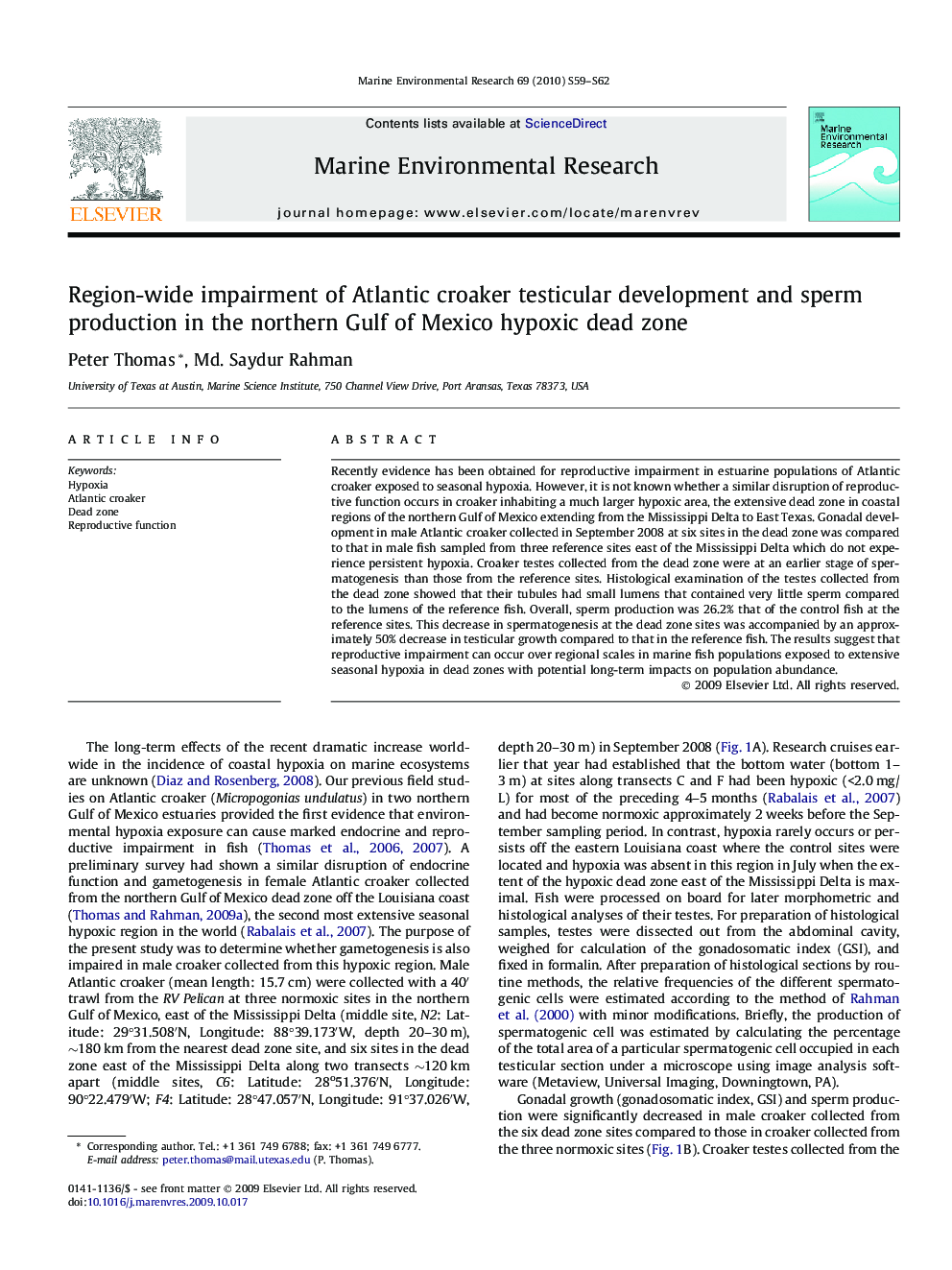| Article ID | Journal | Published Year | Pages | File Type |
|---|---|---|---|---|
| 4551337 | Marine Environmental Research | 2010 | 4 Pages |
Recently evidence has been obtained for reproductive impairment in estuarine populations of Atlantic croaker exposed to seasonal hypoxia. However, it is not known whether a similar disruption of reproductive function occurs in croaker inhabiting a much larger hypoxic area, the extensive dead zone in coastal regions of the northern Gulf of Mexico extending from the Mississippi Delta to East Texas. Gonadal development in male Atlantic croaker collected in September 2008 at six sites in the dead zone was compared to that in male fish sampled from three reference sites east of the Mississippi Delta which do not experience persistent hypoxia. Croaker testes collected from the dead zone were at an earlier stage of spermatogenesis than those from the reference sites. Histological examination of the testes collected from the dead zone showed that their tubules had small lumens that contained very little sperm compared to the lumens of the reference fish. Overall, sperm production was 26.2% that of the control fish at the reference sites. This decrease in spermatogenesis at the dead zone sites was accompanied by an approximately 50% decrease in testicular growth compared to that in the reference fish. The results suggest that reproductive impairment can occur over regional scales in marine fish populations exposed to extensive seasonal hypoxia in dead zones with potential long-term impacts on population abundance.
